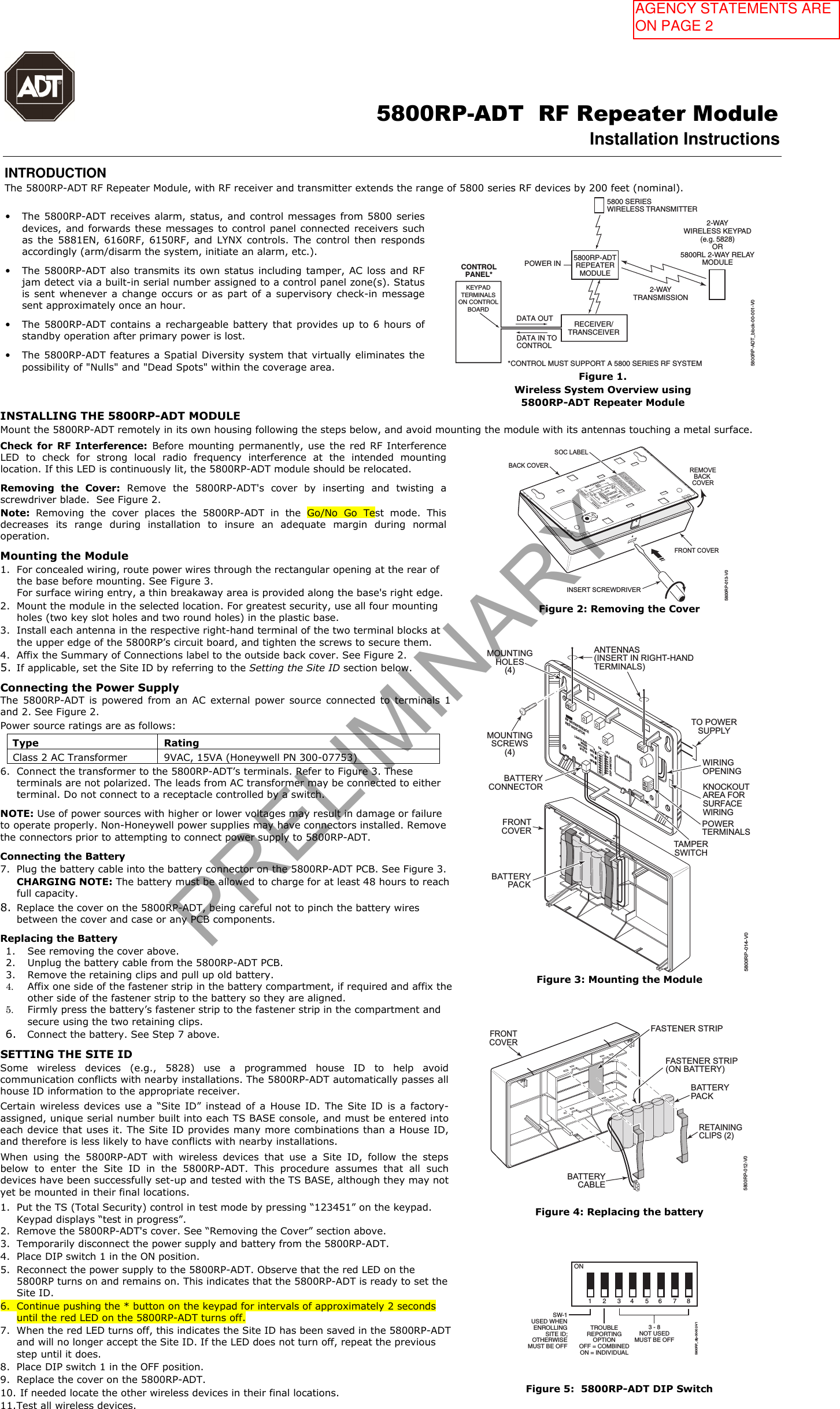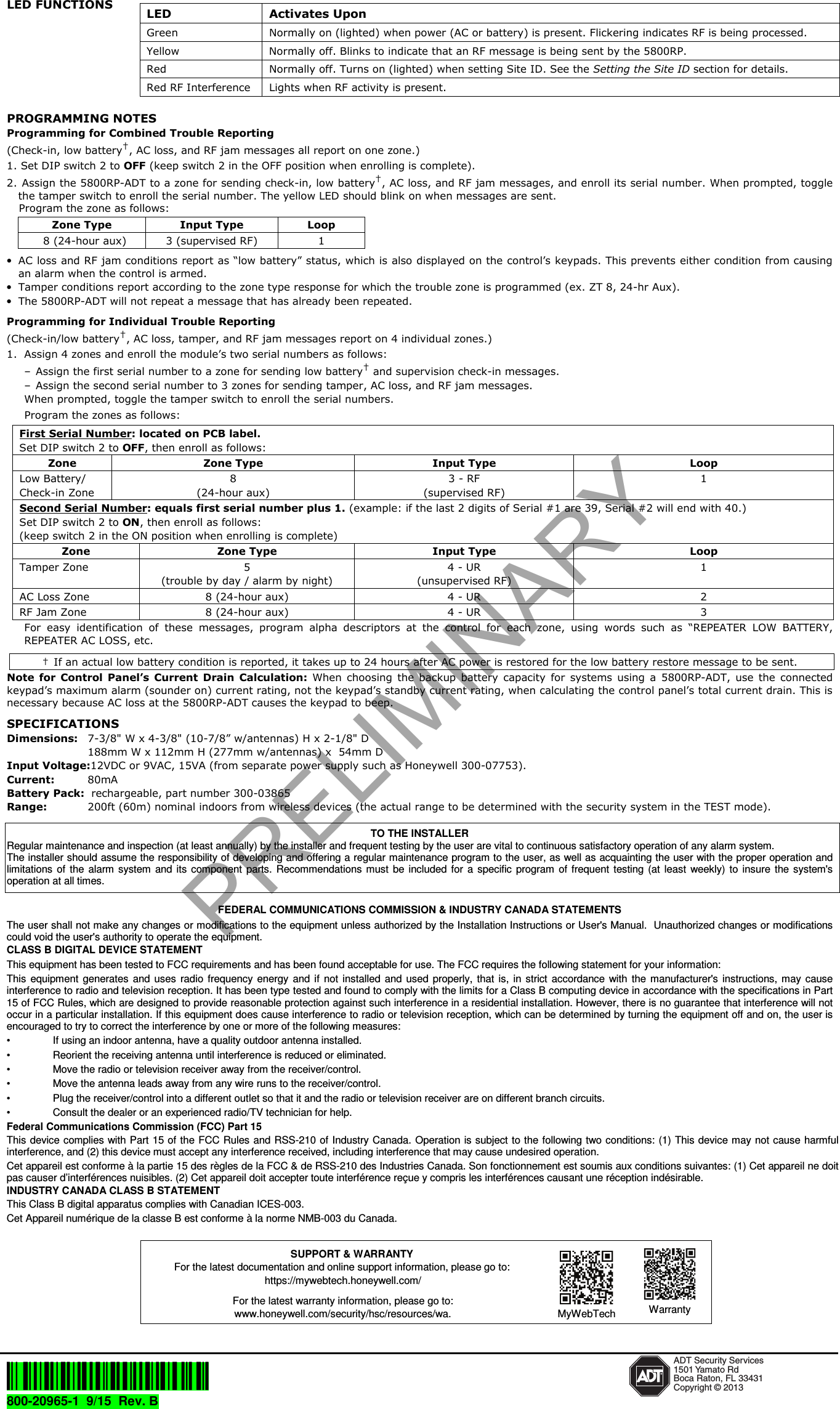Ademco 8DL5800RP2 Wireless, Repeater for TSSC User Manual 800 20965 1 A ii 5800RP ADT
Honeywell International Inc. Wireless, Repeater for TSSC 800 20965 1 A ii 5800RP ADT
Ademco >
Contents
- 1. Users Manaul
- 2. Users Manual Rev 7A
Users Manaul

